E-Waste: Protecting the Environment, One PLC at a Time
Date: 18th Oct 2022
Did you know that humans generate approximately 50 million tons of technology and e-waste per year? Now, of course, this isn’t all automation and PLC equipment, but even a portion of such a big number is a lot. This is a growing problem for our planet, but we at 4D Controls are doing our best to make a difference.
If you’re not familiar with us, we offer both new and used programmable logic controllers and other automation equipment, nearly all of which is obtained second-hand.
We currently source our second-hand parts from a variety of industries including:
- Oil Refineries & Processing Plants
- Power Stations & Mine Sites
- Automotive Manufacturing
- Print Media Facilities
- Any facility that has a level of automation
This post is here to provide some information on how these products affect the environment, and to show you the impact you make when doing business with 4D Controls!
Preventing Unnecessary E-Waste
First, we’d like to talk about landfills.
Since the majority of our products are from second-hand sources, we save many parts from going to landfill.
You might be wondering how much?
As of today, between our current and sold stock, that’s:
-
-
-
- 47 tonnes which is the equivalent of 34 cars or half a Boeing plane.
- 239 cubic meters which is the equivalent of 3 double-decker buses.
-
-
Your second question might be: why are landfills so bad in the first place?
Well, in the realm of PLCs and other automation technology, the impact of disposing of these products can be significant. Many of these items contain non-biodegradable plastics or hazardous substances, such as lead and mercury, that can easily seep out into the surrounding area. These substances can contaminate the soil and groundwater, damaging the surrounding plants and animals. This can also have serious health effects for humans when these chemicals are consumed or even just inhaled.
By fixing, testing, then selling old parts, we ensure that chemicals and e-waste are kept out of landfills and put to good use with our customers.
Second, on the topic of preventing waste is helping others to buy used parts instead of new ones. While the newest parts may be great, used or surplus ones already exist! New products require further draining of limited resources, such as those needed for the creation of metals, plastics, and glass. These materials are non-renewable, meaning that they cannot be replaced naturally or by human means. According to the Journal of Industrial Ecology, these materials will potentially be depleted within the next 100 years. As a result, buying used or surplus items saves these materials from being used. In turn, this extends the life of our resources, as well as reduces the amount of climate change damage created by the harsh processes required to obtain these resources.
Managing Necessary E-Waste
Of course, there will always be parts we come across that can’t be passed on to a new owner. In these situations, we first see which pieces can be used to fix other products, then the rest is disposed of as e-waste. If you’re unfamiliar, e-waste is the broad term for electronic products that are no longer usable. These products are taken to a recycling centre that separates them into those that can be reused, dismantled to obtain certain desirable parts, or can provide those non-renewable materials mentioned above. After this, these materials are separated using magnetic and water separation techniques. Last, the sorted materials are prepared for reuse and are returned to the marketplace.
We at 4D are always working hard to provide customers like you with environmentally responsible automation options. We hope this post has shown you just how important it is to make these eco-friendly choices. Small changes can go a long way!
If you’re interested in placing an order with us today, check out our online store. Or feel free to contact our sales team to get help finding what you’re looking for.








